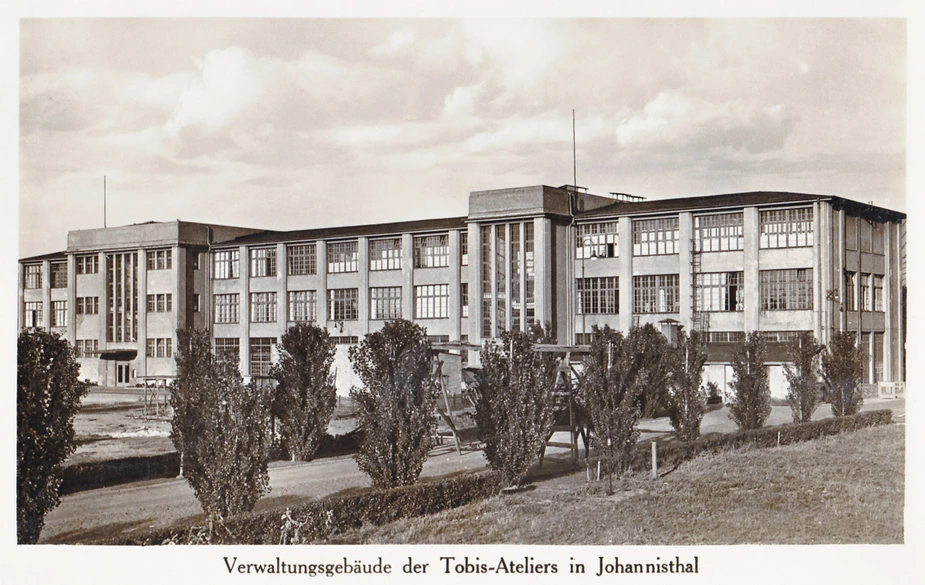Berlin’s forgotten dream factory
The Johannisthaler Filmanstalten (Jofa) film studios were founded a hundred years ago
The year 1920 began with some far-reaching changes for the German Empire. On 10 January, the Treaty of Versailles became effective. In Johannisthal and Adlershof, two then-rural communities on the south-eastern outskirts of Berlin, this meant that the game was over for countless local airplane manufacturers. Article 198 of the Treaty of Versailles forced Germany to dismantle all its military aircraft and prohibited building up an air force. What to do with all the newly built modern aircraft assembly hangars? Dr. Enno Walther Huth, founder and owner of the Albatross Works, also asked himself this question. Contrary to many other industrialists, Huth reacted quickly: as early as 20 January 1920, he founded the film studio Johannisthaler Filmanstalten (Jofa) as a subsidiary of his company.
Just 120 days later, on 19 May 1920, you could already hear the first clapperboard. Starring the Austrian actress Maria Zelenka in the main role, Arthur Günsburg shot the silent movie drama ‘Verkommen.’ It soon turned out that Huth had identified and filled a gap in the market.
In addition to being a one-of-a-kind company in Germany for letting out studios, the Jofa was also the world’s largest photographic studio, its excellent working conditions attracting many movie producers.
More than four-hundred silent movies were said to have been shot here, including classics like ‘Nosferatu’ by Friedrich Wilhelm Murnau, which is still venerated today. The last silent movie to come out of Johannisthal was the 1929 ‘Mother Krause's Journey to Happiness’ by director Phil Jutzi based on an idea of the German illustrator Heinrich Zille with music by Paul Dessau.
The German movie company Tobis took over the premises in the early 1930s. During the following years, almost the entire German cinema elite stood, sat, danced, and sang in front of the Jofa’s cameras: Asta Nielsen starred in her only talkie film, Hans Albers in his first, and the great but small tenor Joseph Schmidt came her to have his voice ring out into the world. Theo Lingen, Gustaf Gründgens, Marianne Hoppe, and Heinz Rühmann, all shot here. Until 1945, the German film industry – and, with it, the Jofa – was integral to the Nazi’s propaganda machine.
After June 1945, the main building served to dub Soviet documentaries and feature films. This was the starting point for the DEFA-Studio für Synchronisation, the studio charged with dubbing all foreign motion pictures for East Germany’s cinemas and television into German. Between 1946 and 1961, the DEFA, East Germany’s state-owned film studio, shot almost fifty feature films here and, in 1962, the GDR’s German Television Broadcasting moved into the studios. They now focused on television productions for franchises like ‘Weimarer Pitaval’, ‘Der Staatsanwalt hat das Wort’ and ‘Polizeiruf 110’ as well as series like ‘Wege übers Land’.
In the early 1990s, ownership of the premises and all its facilities was taken over by the Kirch Group. While there were still films being dubbed at the studios, the demolition of all the site’s buildings started in 1995. Only the former Jofa headquarters on Strasse am Flugplatz and a DEFA house for cutting, built in the early 1950s, remind passers-by of Johannisthal’s 70-year movie history.
A new book titled ‘Berlins vergessene Traumfabrik – Johannisthaler Filmgeschichte(n)’ will be presented on 28 April 2020, the Jofa’s one hundredth birthday birthday. It was written by Wolfgang May, who has acquired an unparalleled knowledge of the site’s movie history over the years.
Naturally, the birthday celebrations are topped off with a Jofa film at Forum Adlershof. ‘The Indian Tomb’ is a monumental film by director Joe May (not related to the book author Wolfgang May) from 1921. Playing live on the piano, the adventurous events taking place on the screen will be accompanied by Stephan Graf von Bothmer, Germany’s best-known silent film composer and pianist.
By Harry Mehner for Adlershof Journal
